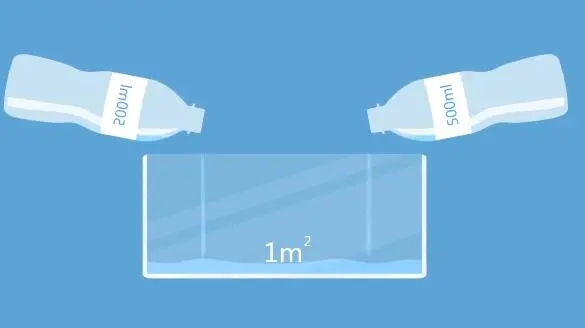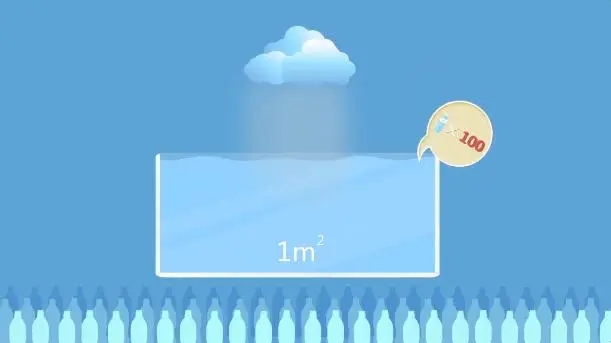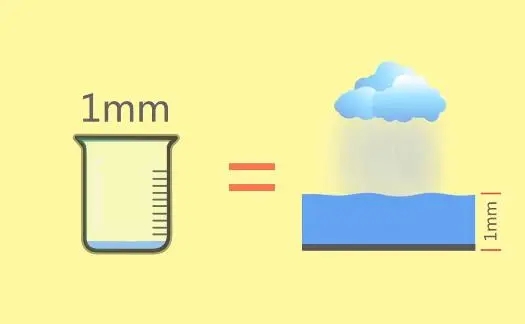

— Blogs —
—Products—
 Consumer hotline +8618073152920
Consumer hotline +8618073152920 WhatsApp:+8615367865107
Address:Room 102, District D, Houhu Industrial Park, Yuelu District, Changsha City, Hunan Province, China
Product knowledge
Time:2024-05-14 22:13:24 Popularity:7417
Rainfall measurement is a crucial aspect of meteorology. Here's an explanation of how rainfall is measured and the concept of 1 mm of rainfall:
Rainfall Measurement:
Rainfall refers to the total amount of liquid or melted solid precipitation that falls on a ground surface over a specific period, typically 12 or 24 hours. It is a measure of the depth of water that accumulates on a horizontal surface after all evaporation, percolation, and runoff have been accounted for. Rainfall is usually measured in millimeters (mm) and recorded with one decimal place in meteorological observations. It provides a straightforward indicator of the intensity of rainfall.

24-Hour Rainfall Amounts:
- Light Rain: 0.1-9.9 mm
- Moderate Rain: 10.0-24.9 mm
- Heavy Rain: 25.0-49.9 mm
- Stormy Rain: 50.0-99.9 mm
- Heavy Stormy Rain: 100.0-249.9 mm
- Very Heavy Stormy Rain: ≥250.0 mm
Millimeter of Rainfall:
Imagine 1 mm of rainfall as a depth of water accumulated on a flat surface. It's roughly equivalent to pouring two 500-milliliter bottles of water onto one square meter of level glass. For 50 mm of rainfall, it would be about 100 bottles.

If we consider an area of one mu (666.7 square meters), 1 mm of rain means approximately 0.667 cubic meters of water, which weighs about 667 kilograms since 1 cubic meter of water weighs 1000 kilograms. It has been calculated that a rainfall of 5 mm can saturate droughty soil by 3 to 6 centimeters.


Importance of Rainfall Measurement:
Rainfall is a key factor in calculating regional water resources. It is essential to have an accurate and convenient method to predict rainfall for effective water resource management.

Rainfall Measurement Tools:
The primary tools for measuring rainfall are the bucket rain gauges, which are commonly used by both meteorological and hydrological agencies. These gauges consist of a funnel-shaped collector that directs the rainwater into a container or 'bucket'. When the bucket fills to a certain level (e.g., 0.1 mm), it tips over, recording the rainfall event. Each tip of the bucket sends a pulse to a recording device, which tallies the rainfall depth.
Working Principle of Bucket Rain Gauge:
The rain gauge's working principle involves rainwater entering a funnel at the top, flowing into a measuring bucket, and when the water reaches a certain height (such as 0.1 mm, 0.2 mm, or 0.5 mm), the bucket tips over, sending a switch closure signal through an electrical circuit to the recorder. This process continues, providing a measure of the entire rainfall event.
Rainfall measurement is a crucial aspect of meteorology. 1 mm of rainfall refers to the depth of water that accumulates on a flat surface after all evaporation, percolation, and runoff have been accounted for. It is typically measured over a 24-hour period and is recorded in millimeters.
For instance, 1 mm of rainfall is approximately equal to pouring two 500-milliliter bottles of water over one square meter. In the context of agriculture, 1 mm of rain is equivalent to about 667 kilograms of water per mu (666.7 square meters). This highlights the significance of rainfall as a critical factor in calculating regional water resources and underscores the importance of having an accurate and convenient method to predict rainfall for effective water resource management.
Meteorological and hydrological agencies primarily use bucket rain gauges to measure rainfall. These gauges work on the principle of collecting rainfall in a funnel and measuring the amount that tips over once it reaches a certain level, such as 0.1 mm. Each time the measuring bucket tips over, it sends a pulse to a recording device, which calculates the total rainfall depth.
NBL-W-RS-Tipping-bucket-rain-gauge-instruction-manual-0.5mm.pdf
Related recommendations
Sensors & Weather Stations Catalog
Agriculture Sensors and Weather Stations Catalog-NiuBoL.pdf
Weather Stations Catalog-NiuBoL.pdf
Related products
 Combined air temperature and relative humidity sensor
Combined air temperature and relative humidity sensor Soil Moisture Temperature sensor for irrigation
Soil Moisture Temperature sensor for irrigation Soil pH sensor RS485 soil Testing instrument soil ph meter for agriculture
Soil pH sensor RS485 soil Testing instrument soil ph meter for agriculture Wind Speed sensor Output Modbus/RS485/Analog/0-5V/4-20mA
Wind Speed sensor Output Modbus/RS485/Analog/0-5V/4-20mA Tipping bucket rain gauge for weather monitoring auto rainfall sensor RS485/Outdoor/stainless steel
Tipping bucket rain gauge for weather monitoring auto rainfall sensor RS485/Outdoor/stainless steel Pyranometer Solar Radiation Sensor 4-20mA/RS485
Pyranometer Solar Radiation Sensor 4-20mA/RS485
Screenshot, WhatsApp to identify the QR code
WhatsApp number:+8615367865107
(Click on WhatsApp to copy and add friends)